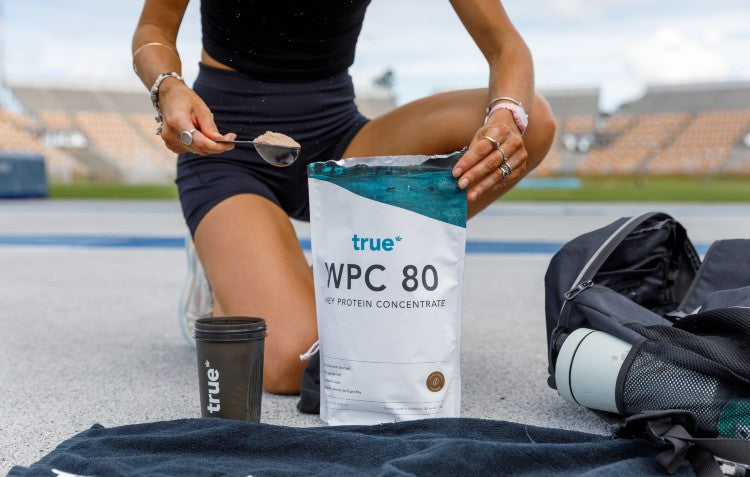It’s one of the most common and frustrating moments in any wellness journey. The scales were moving, your clothes were fitting better, and your confidence was soaring. Then, suddenly, everything grinds to a halt. For weeks, despite sticking to your plan, the number on the scale refuses to budge.
You’ve hit a weight loss plateau.
Before you feel discouraged, it's important to understand one thing: a plateau is not a sign of failure. In fact, it's a completely normal and predictable part of the process. It's a sign that your body has adapted to the positive changes you've made.
This guide will walk you through exactly why plateaus happen and provide you with actionable, science-backed strategies to push past them and get back on track towards your goals.
First, what exactly is a weight loss plateau?
A weight loss plateau is a period where your weight remains stable for two or more weeks, despite continuing the same diet and exercise routine that previously led to weight loss.
The primary reason this happens is a process called metabolic adaptation. As you lose weight, your body composition changes. With less body mass, your Basal Metabolic Rate (BMR)—the number of calories your body burns at rest—naturally decreases.
Think of it this way: a lighter body requires less energy (calories) to move and function than a heavier one. Your body, in its incredible wisdom, has simply become more efficient. The calorie deficit that worked for you at the beginning of your journey may now be your body's new maintenance level.
The key isn't to become frustrated; it's to adapt your strategy intelligently.
8 Actionable Strategies to Break Through a Weight Loss Plateau
1. Re-evaluate Your Calorie and Macronutrient Intake
Because your BMR has decreased, you may need to adjust your intake. This doesn't necessarily mean drastically cutting calories. Instead, focus on the quality of your calories. Are you getting enough of the right macronutrients? Protein, carbohydrates, and fats? A small, calculated adjustment can often be enough to reignite fat loss.
2. Prioritise Protein at Every Meal
If you only implement one strategy from this list, make it this one. Increasing your protein intake is arguably the most powerful tool for breaking through a plateau for three key reasons:
-
Increases Satiety: Protein is the most satiating macronutrient, meaning it helps you feel fuller for longer. This naturally reduces overall calorie consumption by curbing cravings and preventing mindless snacking.
-
Boosts Metabolism (Thermic Effect of Food): Your body uses more energy to digest protein compared to fats and carbohydrates. This is known as the Thermic Effect of Food (TEF). A high-protein diet can increase the number of calories you burn each day by simply digesting your food.
-
Preserves Lean Muscle Mass: When you're in a calorie deficit, your body can break down muscle tissue for energy, which further lowers your metabolism. A high protein intake helps protect and preserve that hard-earned lean muscle, ensuring your metabolic rate stays as high as possible.
How to Apply It:
Aim for a source of protein in every meal and snack. A high-quality protein powder, like True Protein's WPI 90, is an incredibly efficient way to meet your daily protein needs without adding excess carbs or fats. It's clean, all-natural, and highly bioavailable, meaning your body can use it effectively to support muscle preservation and recovery. For our plant-based community, True Plant Protein offers a powerful blend of pea, pumpkin, and faba bean proteins to achieve the same goal.
3. Introduce Variety into Your Workout Routine
Just as your metabolism adapts to your diet, your body adapts to your workouts. If you've been doing the same 45-minute jog three times a week, your body has become very efficient at it.
It's time to mix things up.
-
Incorporate Resistance Training: Building muscle is the number one way to increase your BMR long-term. More muscle means more calories burned, even at rest. If you're already lifting, try changing your exercises, rep ranges, or introducing principles like progressive overload.
-
Try High-Intensity Interval Training (HIIT): HIIT involves short bursts of all-out effort followed by brief recovery periods. It's incredibly effective at burning calories in a short amount of time and can keep your metabolism elevated for hours after your workout is finished.
4. Increase Your NEAT
NEAT stands for Non-Exercise Activity Thermogenesis, and it refers to all the calories you burn from activities that aren't formal exercise. This includes walking to the bus stop, taking the stairs, doing housework, or even fidgeting at your desk. These small movements can add up to a significant calorie burn over the day. Make a conscious effort to move more in your daily life.
5. Review Your 'Hidden' Habits
Often, a plateau can be caused by small, unconscious habits creeping back in. Be honest with yourself. Are your portion sizes slightly larger than they were? Are weekend treats becoming more frequent? Tracking your intake diligently for a few days can often reveal these "calorie leaks."
6. Prioritise Sleep and Manage Stress
This is a non-negotiable for sustainable health. Lack of sleep and chronic stress increase the production of the hormone cortisol. Elevated cortisol can increase appetite, drive cravings for unhealthy food, and encourage your body to store fat, particularly around the midsection. Aim for 7-9 hours of quality sleep per night and incorporate stress-management techniques like walking, meditation, or yoga.
7. Stay Properly Hydrated
Water is essential for a healthy metabolism and helps your body burn fat efficiently. Sometimes, our brains can also mistake thirst for hunger. Staying hydrated ensures your metabolic processes are running optimally and can help manage your appetite.
8. Be Patient and Trust the Process
Finally, it’s crucial to manage your expectations. Weight loss is never linear. There will be ups, downs, and periods of maintenance. A plateau might just be your body's way of catching up and settling into a new, healthier set point. Stay consistent with these strategies, and trust that your progress will resume.
Key Takeaways
-
A weight loss plateau is a normal part of the journey caused by metabolic adaptation, where your metabolism slows as your body weight decreases.
-
To break a plateau, you need to adapt your strategy. This doesn't mean resorting to extreme measures.
-
Prioritising protein is the most effective strategy to boost metabolism, increase satiety, and preserve lean muscle.
-
Varying your workouts, especially by adding resistance training, is crucial for increasing your resting metabolic rate.
-
Don't neglect the fundamentals: sleep, stress management, hydration, and daily movement (NEAT) are all critical for success.
A plateau isn't a wall; it's a stepping stone. It's an opportunity to listen to your body, refine your approach, and build even healthier, more sustainable habits for the long term.








